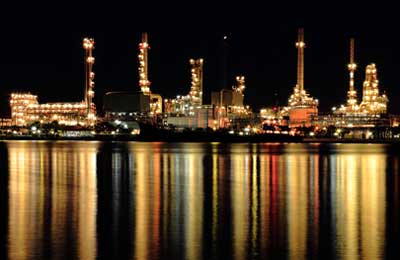
Saudi summer oil burn hits record high in 2012
Dubai, November 19, 2012
Saudi Arabia burned record volumes of crude oil over the summer, official government figures show, contrary to its aim of using more gas for power generation to reduce wastage of crude that it could export.
During the peak period from early June through September, Saudi Arabia burned an average of 763,250 barrels per day (bpd) of crude, compared to an average of 701,250 bpd last year and 747,750 bpd in the previous record summer of 2010, official government data issued on Sunday under the Joint Oil Data Initiative (JODI) shows.
Saudi Oil Minister Ali al-Naimi said in March that more natural gas should be available from fields that only produce gas, or so-called non-associated fields, to meet peak summer power demand, potentially saving millions of barrels of valuable crude for export.
Key to this plan was the ramp-up of Karan, Saudi Aramco's first non-associated offshore gas field, which was completed ahead of schedule, helping boost Saudi gas production by 18 percent over summer, Aramco said in October.
Karan, which can pump gas free from Opec-constrained crude oil fields, should save tens of millions of barrels of crude for export over coming years.
But its rapid ramp up was not enough to prevent a rebound in crude oil burning in the world's leading oil exporting country, as rampant power demand and tight supplies of alternative fuels for electricity and sea-water desalination sucked in millions more Saudi crude barrels for burning this year.
"Karan has definitely contributed to reduce crude oil burning, had it not been on stream, oil burning could have exceeded 850,000 bpd in the peak summer period," said Sadad al-Husseini, a former top executive at Saudi Aramco said.
"But demand (for power) was significantly higher, due to an exceptionally hot summer."
In summer 2011, record Saudi imports of diesel and fuel oil, which is used to generate power in parts of the country, combined with a sharp rise in Saudi crude production which boosted associated gas supplies, contributed to the first hiatus in the rise of crude burning since 2003.
Lack of refinery capacity means Saudi has to import fuel.
Saudi crude production averaged 9.845 million bpd from June to September 2012, or 192,500 bpd more than it pumped in the same period of last year, which would have brought with it more associated gas from the kingdom's vast oil fields.
But there was still not enough gas to meet demand as temperatures in the kingdom soared over 45 degrees Celsius.
Despite stepping up diesel and fuel oil imports , a market made tighter by sanctions on Iran kept prices high and supplies scarce, forcing the country sitting on the world's largest oil reserves to burn around 7.56 million more barrels of oil over the four months than it did last year.
At an average price of $105 a barrel, that equates to around $800 million more Saudi crude burnt this summer.
Saudi Arabia is by far the largest user of crude oil for power generation, with most countries outside the Middle East cutting back oil-fired power generation long ago in favour of gas, nuclear and renewable energy sources.
Aramco now manages known gas reserves of 279 trillion cubic feet, the fourth largest in the world, and hopes to increase its gross gas production from 10.2 billion cubic feet per day (bcfd) in 2010 to more than 15 bcfd by 2015.
It has raised output significantly over the past few years but has not been able to keep up with rapidly rising demand driven by population growth and a buoyant industrial sector.
UAE burn
Although dwarfed by Saudi Arabia, the United Arab Emirates (UAE), which generates the vast majority of its electricity with natural gas, set light to an average of 20,000 bpd oil in the period, compared to just 4,500 bpd last summer and a previous high of 14,750 bpd in 2010.
The UAE burned an average of 79,000 bpd of oil in April, nearly four times its previous monthly record high of 21,000 bpd set in December 2011, according to JODI data.
Kuwait, which like the UAE has tried to reduce its oil use for power generation by increasing imports of liquefied natural gas over the last few years, burned 13,000 bpd more crude every day this summer than it did last year.
But less of its oil was used than in the June-September periods of peak air conditioning demand in 2009 and 2010, JODI figures show. – Reuters







